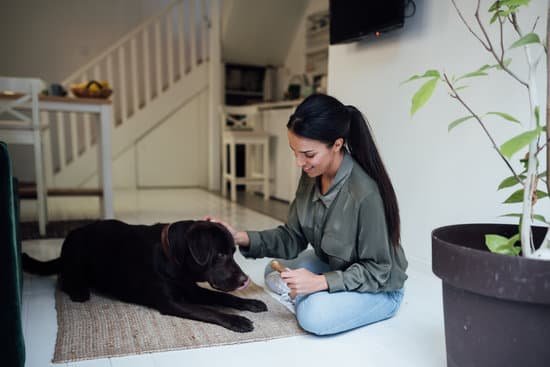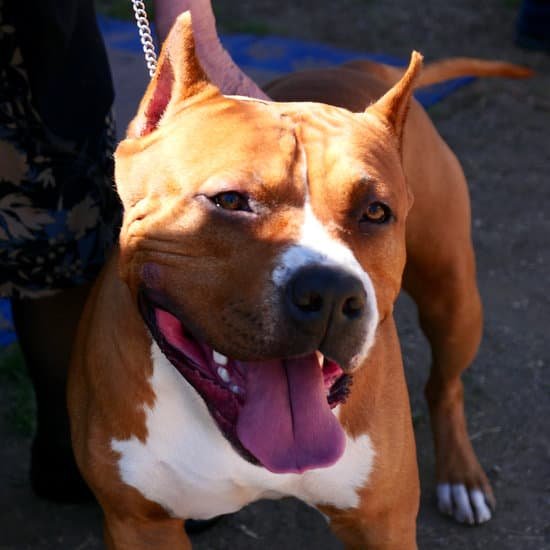Training your dog to become a therapy dog can be incredibly rewarding, both for you and the communities you serve. Therapy dogs are known for their unique ability to bring comfort, joy, and companionship to various individuals in need. Whether it’s by visiting hospitals, nursing homes, or schools, therapy dogs play a vital role in improving the well-being of others.
The positive impact that therapy dogs can have is immeasurable. They provide emotional support and stress relief to those going through difficult times. Therapy dogs have been shown to reduce anxiety and blood pressure, boost mood, and promote overall health and wellness. In addition to benefiting individuals, therapy dogs also contribute to the community as a whole by bringing smiles and happiness wherever they go.
However, training a dog for therapy work requires dedication, patience, and proper guidance. It involves teaching your furry friend specific skills and behaviors that allow them to interact effectively in different situations. Before embarking on this journey, it’s important to understand the qualities that make a great therapy dog and how to find the right training program or class for your canine companion.
By investing time and effort into training your dog as a therapy dog, you not only provide an invaluable service but also form an unbreakable bond with your furry friend. The journey of becoming a therapy dog handler is filled with joy, fulfillment, and endless opportunities for making a positive difference in the lives of others. So let’s explore what it takes to train your dog as a therapy dog and embark on this incredible journey together.
What Qualities Should Your Dog Possess for Therapy Work?
For a dog to excel in therapy work, they must possess specific qualities and temperament traits. These qualities not only make the dog suitable for providing therapy, but also help them interact effectively with individuals in need. When choosing a dog for therapy work, it is important to look for the following characteristics:
- Calm and Friendly Disposition: A therapy dog should naturally be calm and friendly towards people. They should be able to remain composed even in stressful or unfamiliar situations. It is crucial that they are comfortable being petted and handled by strangers.
- Good Temperament: Dogs with a stable temperament are more likely to succeed as therapy dogs. They should be patient, gentle, and able to handle unexpected noises or sudden movements without becoming anxious or reactive.
- Ability to Bond: Therapy dogs should have a strong bond with their owner as well as the ability to form positive connections with different individuals. This helps create trust between the dog, their handler, and the person receiving therapy.
- Adaptability: Since therapy dogs work in a variety of environments such as hospitals, nursing homes, schools, and rehabilitation centers, they need to be adaptable. They should be comfortable encountering new places, smells, sounds, and various types of people.
| Qualities | Description |
|---|---|
| Calm and Friendly Disposition | Able to remain calm and friendly towards people in all situations. |
| Good Temperament | Patient, gentle, and able to handle unexpected noises or sudden movements. |
| Ability to Bond | Strong bond with the owner as well as forming positive connections with different individuals. |
| Adaptability | Comfortable encountering new places, smells, sounds, and various types of people. |
When considering your dog for therapy work, it is essential to assess their temperament and determine if they possess these qualities. Not every dog is suitable for this type of work, so it is important to be honest about your dog’s strengths and limitations. If you believe your dog has the appropriate characteristics, then they may have the potential to become a successful therapy dog.
Finding the Right Training Program or Class
Once you have identified that your dog possesses the qualities necessary for therapy work, it is important to find the right training program or class to further develop their skills. There are several options to consider when it comes to training your dog to become a therapy dog, and finding the right fit for your dog’s needs is crucial.
One way to start your search for the perfect training program is by researching different options in your area. Look for programs or classes that specifically focus on therapy dog training. These programs often have trainers who are experienced in working with therapy dogs and can provide valuable guidance and support throughout the process.
When choosing a training program or class, consider your dog’s individual needs and temperament. Some programs may specialize in certain types of therapy work, such as working with children or seniors. Assess whether these specialized programs align with your goals for therapy work with your dog.
Another important factor to consider is the methodology used by the training program or class. Positive reinforcement-based methods are widely recommended for therapy dogs, as they promote a strong bond between handler and dog while also ensuring a positive and rewarding experience for the dog during training.
Additionally, reaching out to local therapy dog organizations or speaking with other therapy dog handlers can provide valuable insights and recommendations on reputable training programs or classes in your area. Networking within the therapy dog community can be beneficial as you navigate this journey with your furry friend.
Finding the right training program or class is an essential step towards preparing your dog for therapy work. With careful consideration of your dog’s needs, goals, and methodology preferences, you can ensure that you find a program that will set both you and your canine companion up for success in becoming a certified therapy team.
Basic Obedience Training Essential for Therapy Dogs
Basic obedience training is an essential foundation for therapy dogs. Before a dog can be considered for therapy work, they must have a thorough understanding of basic obedience commands such as sit, stay, and come. This level of obedience not only ensures the safety and control of the dog in various environments but also allows them to focus on their role as a therapy dog.
The Importance of Basic Obedience Commands
Having a strong foundation in basic obedience commands is crucial for successful therapy work. These commands provide the groundwork for effective communication between the handler and the dog during therapy sessions. For example, if a therapy dog is visiting a hospital room and the patient requests that the dog sits calmly beside them, it is imperative that the dog can respond to this command without hesitation.
- Sit: Teaching your dog how to sit on command is important for maintaining control and ensuring they remain calm in different settings.
- Stay: The stay command is vital in therapy situations where the dog may need to remain still or focused while interacting with individuals.
- Come: Having a reliable recall command is crucial for keeping your dog safe during therapy visits and allowing them to return to you promptly when required.
By consistently practicing these basic obedience commands, you are fostering discipline and reliability in your therapy dog. This will enable them to navigate different environments with ease and professionalism.
The Role of Proper Obedience Training
Proper obedience training sets the stage for success in therapy work. Dogs who have received adequate training are better equipped to handle potentially stressful or distracting situations while remaining calm and focused on their task. Furthermore, well-trained dogs tend to exhibit more self-control and responsiveness to their handlers’ cues, creating a positive experience both for those receiving therapy as well as those working with the therapy team.
In addition to basic obedience commands, therapy dogs should also be comfortable walking politely on a leash without pulling or lunging. This skill is particularly important when visiting hospitals, nursing homes, or other healthcare facilities where there may be medical equipment and fragile individuals. A dog that can navigate these environments calmly and respectfully is more likely to be welcome and effective in their therapeutic role.
By investing time and effort into basic obedience training, you are laying the groundwork for your dog’s future success as a therapy dog. Not only does this training ensure their ability to perform the necessary tasks but it also enhances their overall behavior, allowing them to positively impact the lives of others in need.
Socializing Your Dog for Therapy Work
One of the key qualities that a therapy dog should possess is excellent social skills. Socialization plays a vital role in preparing a dog for therapy work, as it helps them feel comfortable and confident in various environments and around different types of people and animals. By exposing your dog to diverse social situations, you can help them become more adaptable and better equipped to handle the challenges they may encounter during therapy visits.
To successfully socialize your dog, it’s important to gradually expose them to different environments, starting with controlled settings. Take your dog to busy parks or pet-friendly stores where they can observe strangers from a distance without feeling overwhelmed. You can also arrange playdates with other well-behaved dogs that are known for being calm and friendly. This will provide an opportunity for your dog to learn appropriate social behaviors and how to interact with their peers.
In addition to people and animals, therapy dogs need to be comfortable with different sensory stimuli commonly found in healthcare facilities such as hospitals or nursing homes. For instance, loud noises from medical equipment, unfamiliar smells, or sudden movements might be encountered during therapy visits.
Expose your dog gradually to these stimuli by replicating them at home using audio recordings of hospital sounds or diffusing scents often found in medical settings. Over time, increase the intensity of exposure until your dog becomes desensitized.
By taking the time to properly socialize your dog for therapy work, you are ensuring that they are prepared for any situation they may face during their visits. Building their confidence through exposure will make them more relaxed and receptive when interacting with individuals in need of emotional support or assistance. Remember, socialization is an ongoing process that requires regular practice and reinforcement even after your dog becomes certified as a therapy dog.
Introducing Your Dog to Different Sensory Stimuli
When training your dog to become a therapy dog, it is essential to expose them to different sensory stimuli in order to prepare them for the various environments they may encounter during their therapy work. By gradually desensitizing your dog to common sights, sounds, and smells in healthcare facilities, you can help ensure that they remain calm and focused during their interactions with individuals in need.
One effective way to introduce your dog to different sensory stimuli is through systematic desensitization. This involves exposing your dog to non-threatening versions of the stimuli at a low intensity and gradually increasing the intensity over time as they become more comfortable.
For example, if your local hospital has distinct smells such as cleaning products or antiseptics, you can start by bringing items with those scents into your home and allowing your dog to become familiar with them. As they become acclimated, you can then visit hospital waiting rooms or other areas where these smells are present.
In addition to smell, it is important for therapy dogs to be comfortable with various sights and sounds that may be common in healthcare settings. This includes things like medical equipment, wheelchairs, crutches, or even loud noises such as alarms or intercom announcements.
You can expose your dog to these stimuli by taking them on supervised visits to hospitals or nursing homes, allowing them to observe and interact with these objects and sounds in a controlled environment. Gradually increase the exposure over time so that your dog becomes accustomed and indifferent to these stimuli.
By introducing your therapy dog-in-training to different sensory stimuli in a gradual and controlled manner, you are helping them build resilience and adaptability for their future work. This exposure will enable them to remain calm and focused when faced with novel sights, sounds, and smells during therapy sessions.
Remember to always monitor your dog’s reactions closely during these exposures and provide positive reinforcement when they remain relaxed and composed. With time and patience, your dog will become more confident in a variety of sensory environments and be ready to provide comfort and support as a therapy dog.
Practicing Therapy Scenarios and Exercises
Once your dog has completed basic obedience training and has been properly socialized, it is important to begin practicing therapy scenarios and exercises. This will help your dog adapt to the environment and behaviors that they will encounter during actual therapy work. By simulating these situations in controlled settings, you can prepare your dog for real-life therapy visits.
One important aspect of practicing therapy scenarios is exposing your dog to different types of people. Introduce them to individuals who may use mobility aids such as wheelchairs or crutches, as well as those with different physical or cognitive abilities. This will help your dog become familiar with these individuals and their unique needs.
Furthermore, it is crucial to expose your therapy dog to various environments and settings similar to where they will be working. For example, bring them into hospitals or nursing homes so they can become accustomed to the sights, sounds, and smells associated with these places. Gradually increase the level of complexity by introducing other animals as well, such as cats or birds.
During practice sessions, incorporate specific exercises that simulate common therapy situations. Teach your dog commands like “visit,” which encourages them to approach and interact with someone calmly. Practice having your dog sit still while a person moves around them or touches them gently. Additionally, train your dog to be comfortable with loud noises such as medical equipment or alarms by gradually increasing the volume during training.
By consistently practicing therapy scenarios and exercises, you can ensure that your dog is prepared for any situation they may encounter during actual therapy work. It is essential to provide a supportive and controlled environment during these practice sessions so that both you and your dog feel confident in their abilities.
In the next section, we will discuss the process of preparing for the Therapy Dog Certification Test/Process. This certification is necessary for officially registering your therapy dog and being able to engage in therapy work in various settings.
Preparing for the Therapy Dog Certification Test/Process
Once you have completed the necessary training and your dog possesses the qualities needed for therapy work, the next step in becoming a therapy dog handler is to prepare for the certification test or evaluation. This test is designed to ensure that your dog has the appropriate skills and temperament to safely interact with individuals in various healthcare or therapeutic settings.
Before scheduling the certification test, it is essential to thoroughly research the requirements and expectations of the particular program or organization you wish to certify with. Each organization may have different criteria and standards that they assess during the evaluation process. Some common areas that may be evaluated include obedience skills, socialization with people and other animals, ability to handle various sensory stimuli, and overall behavior in different environments.
To prepare your dog for the certification test, it is important to continue practicing and reinforcing their obedience commands such as sit, stay, come, and leash walking. Focus on improving their response time and reliability with these commands, as this will be crucial when working in therapy situations. Additionally, work on any problem behaviors that need addressing before taking the test.
In preparation for therapy scenarios that your dog may encounter during evaluations, it is beneficial to practice role-playing exercises with a friend acting as a patient or client. Simulate situations where your dog may be approached or touched by unfamiliar people while remaining calm and focused. Gradually increase the level of difficulty by introducing distractions or having interactions occur in different environments.
Remember to be patient with yourself and your dog during this preparation process. It may take time for your dog to feel comfortable in new situations or adapt their behavior accordingly. Continue building upon their training foundation while also focusing on strengthening their communication with you as their handler.
By adequately preparing your dog for the certification test/process, you are ensuring both their safety and the success of therapy sessions they will engage in. With persistence, dedication, and proper training techniques, you can give your dog the best chance of passing the certification and becoming a valuable member of the therapy dog community.
Maintaining and Enhancing Your Dog’s Therapy Skills
Once your dog has become a certified therapy dog, it’s important to continue their training and practice to maintain and enhance their skills. Ongoing training not only ensures that your dog is always ready for therapy work, but it also helps them stay engaged, focused, and adaptable in various healthcare settings. Here are some tips on how to maintain and improve your dog’s therapy skills regularly.
Firstly, consistency is key in maintaining your dog’s therapy skills. Make sure to set aside regular time for training sessions with your dog, even if it’s just a few minutes each day. Consistency helps reinforce their obedience commands and reinforces their understanding of what is expected of them during therapy visits.
Additionally, it’s beneficial to expose your dog to different environments and situations as part of their ongoing training. This could include visiting new places, meeting different people, and encountering various animals. By exposing your dog to these different stimuli, you can help them develop the ability to adapt quickly and remain calm in any situation they may encounter during therapy work.
Continuing education is also crucial for maintaining and enhancing your dog’s therapy skills. Attend workshops or seminars specifically designed for therapy dogs and handlers. These events provide opportunities for learning new techniques, brushing up on existing skills, and networking with other therapy dog handlers.
Furthermore, consider participating in actual therapy visits on a regular basis. This provides valuable hands-on experience for both you and your dog. Engaging in real-life scenarios allows you to assess your dog’s performance, identify areas for improvement, and tailor future training sessions accordingly.
Lastly, always remember to have fun while maintaining and enhancing your dog’s therapy skills. Ensure the training sessions are enjoyable for both you and your furry companion by incorporating positive reinforcement techniques such as treats or praise when they demonstrate desired behaviors.
By consistently practicing with your therapy dog and providing ongoing training opportunities, you can be confident that your dog will continue to be an asset in various therapy settings. Moreover, maintaining and enhancing your dog’s therapy skills not only ensures their efficacy in helping others but also strengthens the bond between you and your beloved furry friend.
Conclusion
In conclusion, becoming a therapy dog handler can bring immense joy and fulfillment to both you and your canine companion. The benefits of having a therapy dog for individuals and the community are invaluable. Through proper training and socialization, your dog can provide comfort, support, and companionship to those in need.
Training your dog to become a therapy dog requires time, effort, and dedication. It is essential to find the right training program or class that suits your dog’s needs and temperament. Basic obedience training is crucial in setting the foundation for therapy work, teaching your dog important commands such as sit, stay, and come.
Socializing your dog is another important aspect of therapy work. By exposing them to various environments, people, and animals, you help ensure they feel comfortable and confident in different situations. Additionally, introducing your dog to different sensory stimuli prepares them for the sights, sounds, and smells they may encounter in healthcare facilities.
Practicing therapy scenarios with your dog in controlled settings is vital for their success as a therapy dog. This helps them adapt to real-life situations they may encounter during visits. Furthermore, it is important to prepare your dog for the therapy dog certification test or evaluation by familiarizing them with the requirements and expectations.
Once certified as a therapy dog team, it is necessary to maintain and enhance your dog’s skills regularly through ongoing training and practice sessions. This ensures that they continue to provide the best possible support while visiting individuals in need.
Becoming a therapy dog handler opens up a world of joys and rewards. Witnessing firsthand the positive impact that your furry companion has on others’ lives can be deeply fulfilling. So if you’re considering embarking on this journey with your own beloved pet, do not hesitate – embrace this opportunity to make a difference through the wonderful world of therapy dogs.
Frequently Asked Questions
How long does it take to train a dog to be a therapy dog?
The length of time it takes to train a dog to be a therapy dog can vary depending on several factors. Generally, it can take several months of consistent training and practice for a dog to become a certified therapy dog. The specific amount of time required also depends on the individual dog’s temperament, breed, and previous training experience.
Dogs that already possess basic obedience skills and have solid socialization tend to progress more quickly in their therapy dog training. Overall, it is important for both the owner and the dog to be patient, committed, and willing to put in the effort required for successful training.
Is it hard to train a dog to be a therapy dog?
Training a dog to become a therapy dog can present some challenges, but whether or not it is considered hard can depend on various factors. Some dogs may naturally exhibit traits desirable for therapy work, such as being calm, friendly, and obedient. In such cases, training might be relatively easier since these dogs already possess some of the necessary qualities.
However, if a dog has behavioral issues or lacks basic obedience skills, additional time and effort will need to be invested in their training. It is essential to have a clear understanding of your dog’s temperament and willingness to learn before embarking on therapy dog training. While it may require dedication and consistency from both the owner and the dog, many individuals find the process rewarding.
Will my dog make a good therapy dog?
Whether or not your dog will make a good therapy dog depends on multiple factors that should be evaluated carefully. A good therapy dog typically exhibits qualities like being well-socialized with both people and other animals, having a calm demeanor, being comfortable in various environments, and being able to follow commands consistently.
Additionally, your dog should enjoy interacting with different individuals without exhibiting aggressive or fearful behavior. Every breed has its own unique traits that can influence their suitability as therapy dogs; however, there are exceptions within every breed where individual personality plays an important role as well.

Welcome to the blog! I am a professional dog trainer and have been working with dogs for many years. In this blog, I will be discussing various topics related to dog training, including tips, tricks, and advice. I hope you find this information helpful and informative. Thanks for reading!





